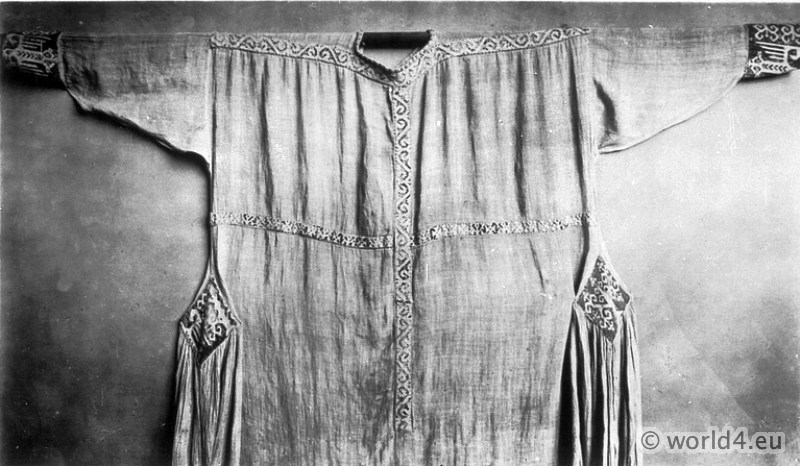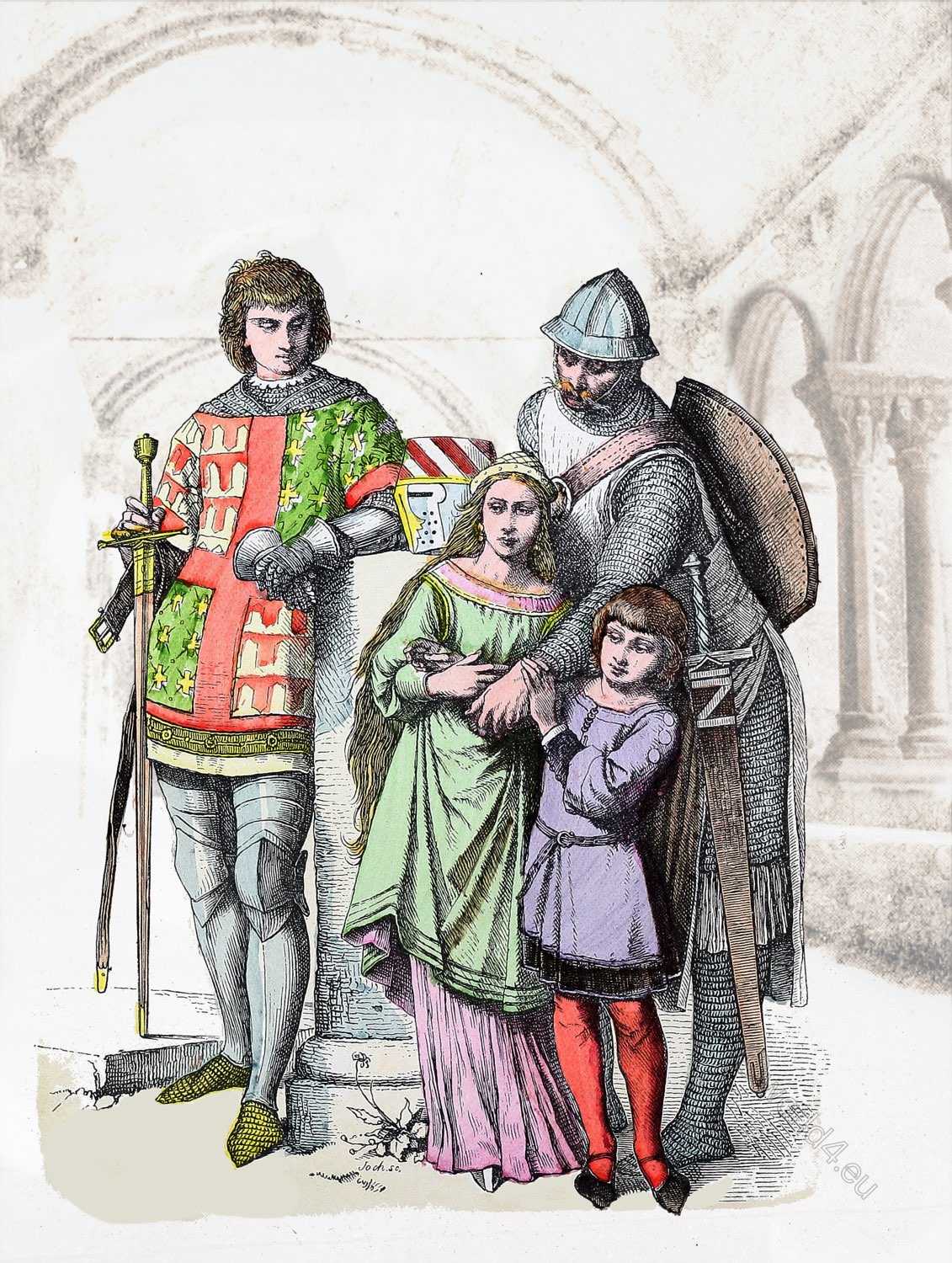COSTUME OF THE THIRTEENTH CENTURY.
JESTERS, OR FOOLS. ANNO 1272
by Charles Hamilton Smith.
“The properties belonging to this strange personage, in the early times, are little known at present; they were such, however, as recommended him to the notice “ of his superiors, and rendered his presence as a sort of requisite in the houses of the opulent.
Yet, certainly, if the illuminators of the thirteenth century have done him justice, he is an object calculated to excite the pity and compassion of the spectators, rather than their merriment. He bears the squalid appearance of a wretched idiot, wrapped in a blanket which scarcely covers his nakedness, holding in one hand a stick, with an inflated bladder attached to it by a cord, which “ answered the purpose of a bauble, and thus we see him depicted,” &c.
These remarks of Mr. Strutt convey a just, though contemptible picture of the state of domestic society, in those ages, when the habitual degradation of human nature into real, or affected ideotism could be esteemed, not only inoffensive, but requisite to divert the ignorant leisure of the great. Kings and princes, nay bishops and abbots, considered this character as a necessary domestic in their retinue, and long after the heroic bard had been dismissed, and the harper and troubadour were reduced to silence, the fool was still summoned to be witty, and practised bis jokes in the hall the kitchen, and the guard-room.
It is probable that the introduction of jesters or fools, like many other of our early customs, is derived from the East. Hindoos and Mohammedans still continue to revere ideots as the favoured of heaven, and possibly the innovation of substituting knaves for idiots was an improvement of European taste.
A real changeling could afford but transient sport to the coarse feelings of semi-barbarians, a jester was, therefore, a more desirable acquisition; and, accordingly, we see, in the progress of civilisation, the fool replaced by the jester, and this latter gradually refined, till at length he often proved to be the most sensible personage in the family where he was maintained.
Archy, the celebrated humourist, has left his name to a waggish turn of expression, and the last of the profession, in England, has proved, that even a mitre was not insensible to the piercing keenness of his jeers.*) But, if, at length, the cap and bells were banished from the court, popular assemblies long retained their relish for them. In my youth, I still remember being shown, in Flanders, the motly garb and bells of the fool, belonging to a gild or confraternity of archers.
The late professor of mirth, among the Flemish boors, had been a cobler, and I was told, that in his day, he appeared the privileged personage of the society, and, that every quirk was repaid with the loud laughter of his broad-faced employers.
*) Archy, or Archee Armstrong, jester to James I. and Charles I. &c.; he had his hood pulled over his head, and was dismissed his office, at the instigation of Archbishop Laud for his sarcastic prayer; “ Great praise be given to God, and little Laud to the devil.” I call him the last, for Muckle John had too much sense to be witty, at a time when sarcasm, even from a fool, was punished as a crime.
The original illumination, from which the figure in the foreground is taken, represents a fool receiving, from a king, a paper, probably a grant of some intended benefit. It is painted in the initial letter, but the page, upon which it is found, is left blank, which proves that the gift was never completed.
From the style of painting, it must belong to tbe reign of Henry III.; for Edward I. could hardly be presumed to have squandered his favours on men, whose society so ill fitted the English Justinian. The attitude is slightly altered, in one hand he holds a stick to which an inflated bladder is fastened, in the other a paper or folded parchment. His legs and feet being bare attest that, in the 13th century, the quality of fool had not yet risen into the consideration which it afterwards obtained, under the name of jester. Below is a fool of the 15th century.
The figure in the foreground is copied, as said above, from an initial letter painted on a blank leaf, and inserted in a book of the Cotton Collection, B. M., marked Nero C. V.— The fool, in the back-ground, from the Harleian, No. 2840. —That below, from a MS. copy of Froissart, in the Harleian, No. 4380.
Source: Selections of the ancient costume of Great Britain and Ireland from the seventh to the sixteenth century, by Charles Hamilton Smith. London: Colnaghi, 1814.
Discover more from World4 Costume Culture History
Subscribe to get the latest posts sent to your email.








